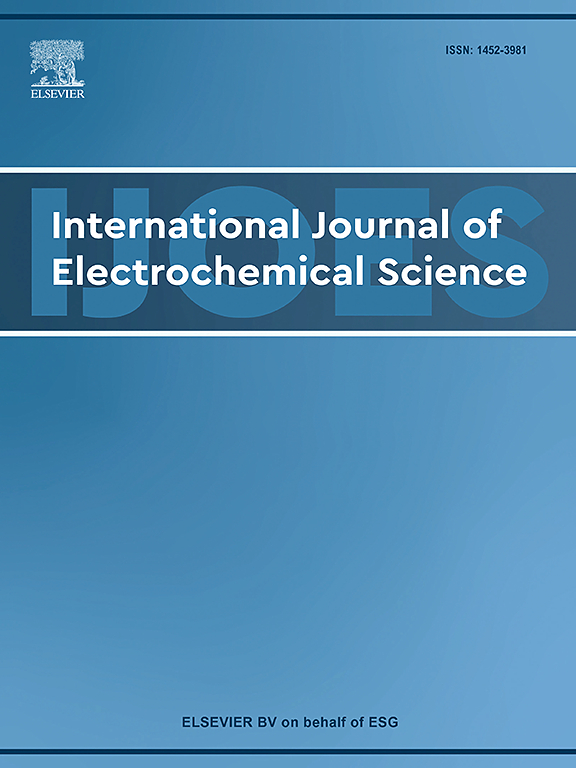石墨烯修饰的丝网印刷电极对不同产地三七的电化学和化学计量学鉴定
IF 1.3
4区 化学
Q4 ELECTROCHEMISTRY
International Journal of Electrochemical Science
Pub Date : 2025-04-28
DOI:10.1016/j.ijoes.2025.101050
引用次数: 0
摘要
将纳米材料修饰传感器技术与先进的数据分析技术相结合,开发了一种高效、快速、低成本的草药鉴定平台。本研究共采集了120份三七样本(云南、四川、广西各40份)进行分析。通过沉积10 μL石墨烯墨水,干燥2小时,制备了石墨烯修饰的丝网印刷电极,得到了平均片状尺寸为200 nm的均匀薄膜。采用差分脉冲伏安法捕捉草药提取物在0.1 M磷酸盐缓冲盐水(pH 7.0)和0.1 M醋酸盐缓冲溶液(pH 4.5)中的氧化还原行为,发现三个样品组在0.47 V、0.50 V和0.45 V处有不同的氧化峰。采集的信号被归一化并进行一阶导数处理,以提高峰值分辨率和最小化基线漂移。随后的主成分分析显示,前两个成分分别占总方差的72 %和13 %,累计解释了85 %的数据变异性。在此基础上,利用机器学习算法对样品进行分类,非线性支持向量机模型的准确率为92.0 %,精密度为92.5 %,召回率为91.5 %,接收者工作特征曲线下面积为0.95,108个测试实例中只有4个误分类。这些结果表明,该平台能够可靠地区分草药提取物化学特征的细微差异,为草药应用中的客观质量控制和认证提供了一种有前景的方法。这些创新发现强调了在商业和研究环境中广泛实施该技术的潜力。本文章由计算机程序翻译,如有差异,请以英文原文为准。
Electrochemical and chemometric authentication of Panax notoginseng from different geographical origins using graphene-modified screen-printed electrodes
An effective, rapid, and low-cost platform for herbal authentication was developed by integrating nanomaterial-modified sensor technology with advanced data analysis techniques. In this study, 120 Panax notoginseng samples (40 each from Yunnan, Sichuan, and Guangxi provinces) were collected and analyzed. A graphene-modified screen-printed electrode was fabricated by depositing 10 μL of graphene ink and allowing a 2-hour drying period, which yielded a uniform film with an average flake size of 200 nm. Differential pulse voltammetry was employed to capture the redox behaviors of herbal extracts in 0.1 M phosphate-buffered saline (pH 7.0) and 0.1 M acetate-buffered solution (pH 4.5), resulting in distinct oxidation peaks at 0.47 V, 0.50 V, and 0.45 V for the three sample groups. The acquired signals were normalized and subjected to first-order derivative processing to enhance peak resolution and minimize baseline drift. Subsequent principal component analysis revealed that the first two components accounted for 72 % and 13 % of the total variance, respectively, cumulatively explaining 85 % of the data variability. Furthermore, machine learning algorithms were applied to classify the samples based on their processed electrochemical fingerprints, with the non-linear support vector machine model achieving an accuracy of 92.0 %, precision of 92.5 %, recall of 91.5 %, and an area under the receiver operating characteristic curve of 0.95, misclassifying only 4 out of 108 test instances. These results indicate that the proposed platform can reliably distinguish subtle differences in the chemical profiles of herbal extracts, offering a promising approach for objective quality control and authentication in herbal medicine applications. These innovative findings underscore the potential for widespread implementation of this technique in commercial and research settings.
求助全文
通过发布文献求助,成功后即可免费获取论文全文。
去求助
来源期刊
CiteScore
3.00
自引率
20.00%
发文量
714
审稿时长
2.6 months
期刊介绍:
International Journal of Electrochemical Science is a peer-reviewed, open access journal that publishes original research articles, short communications as well as review articles in all areas of electrochemistry: Scope - Theoretical and Computational Electrochemistry - Processes on Electrodes - Electroanalytical Chemistry and Sensor Science - Corrosion - Electrochemical Energy Conversion and Storage - Electrochemical Engineering - Coatings - Electrochemical Synthesis - Bioelectrochemistry - Molecular Electrochemistry

 求助内容:
求助内容: 应助结果提醒方式:
应助结果提醒方式:


